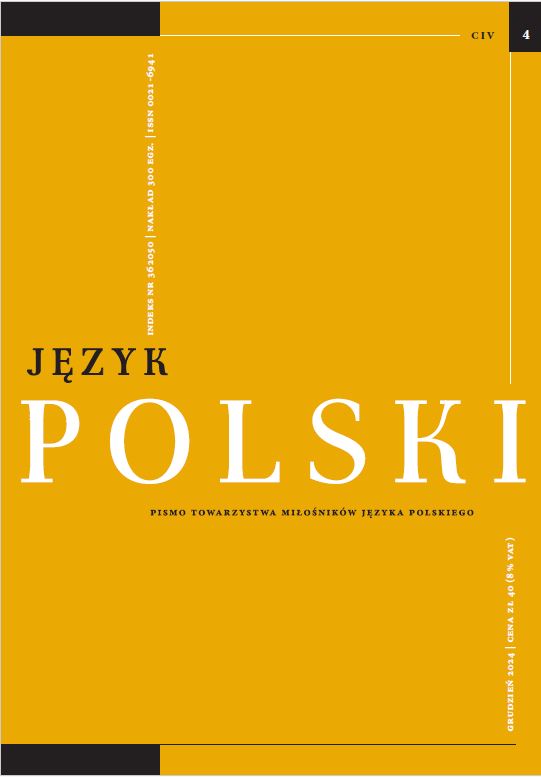Jeszcze raz o składni ad sensum w języku
staropolskich apokryfów. Perspektywa
leksykalna i/a źródłowa
Once more on the syntax ad sensum in the language of Old Polish apocrypha. A lexical
and/or a source perspective
Author(s): Dorota Rojszczak-Robińska , Ewa Nowak-PasterskaSubject(s): Syntax, Historical Linguistics
Published by: Towarzystwo Miłośników Języka Polskiego
Keywords: real-meaning syntax; syntax ad sensum; Old Polish apocrypha; incompatibility of number and gender.;
Summary/Abstract: The subject of the article is the phenomenon of the disruption of the agreement of number and/or genderbetween the subject and the ruling in the language of Old Polish apocrypha. This situation occurs whenthere is a quantified subject, a collective subject or expressed by a noun like tłum or lud. A full analysis of thetexts confirmed that ad sensum syntax is still alive in the late 15th/early 16th century, although it is graduallywithdrawing from the language. Differences can be seen both in the frequency of occurrence of ad sensumsyntax with particular nouns and in particular texts. We also pointed out words that have not been includedin the studies so far (tłuszcza, gromada, zastęp), as well as the collective meanings of words such as stroża orziemia. Source analysis of the examples showed that ad sensum syntax already appears in Latin texts.
Journal: Język Polski
- Issue Year: 2024
- Issue No: 4
- Page Range: 95-113
- Page Count: 19
- Language: Polish

